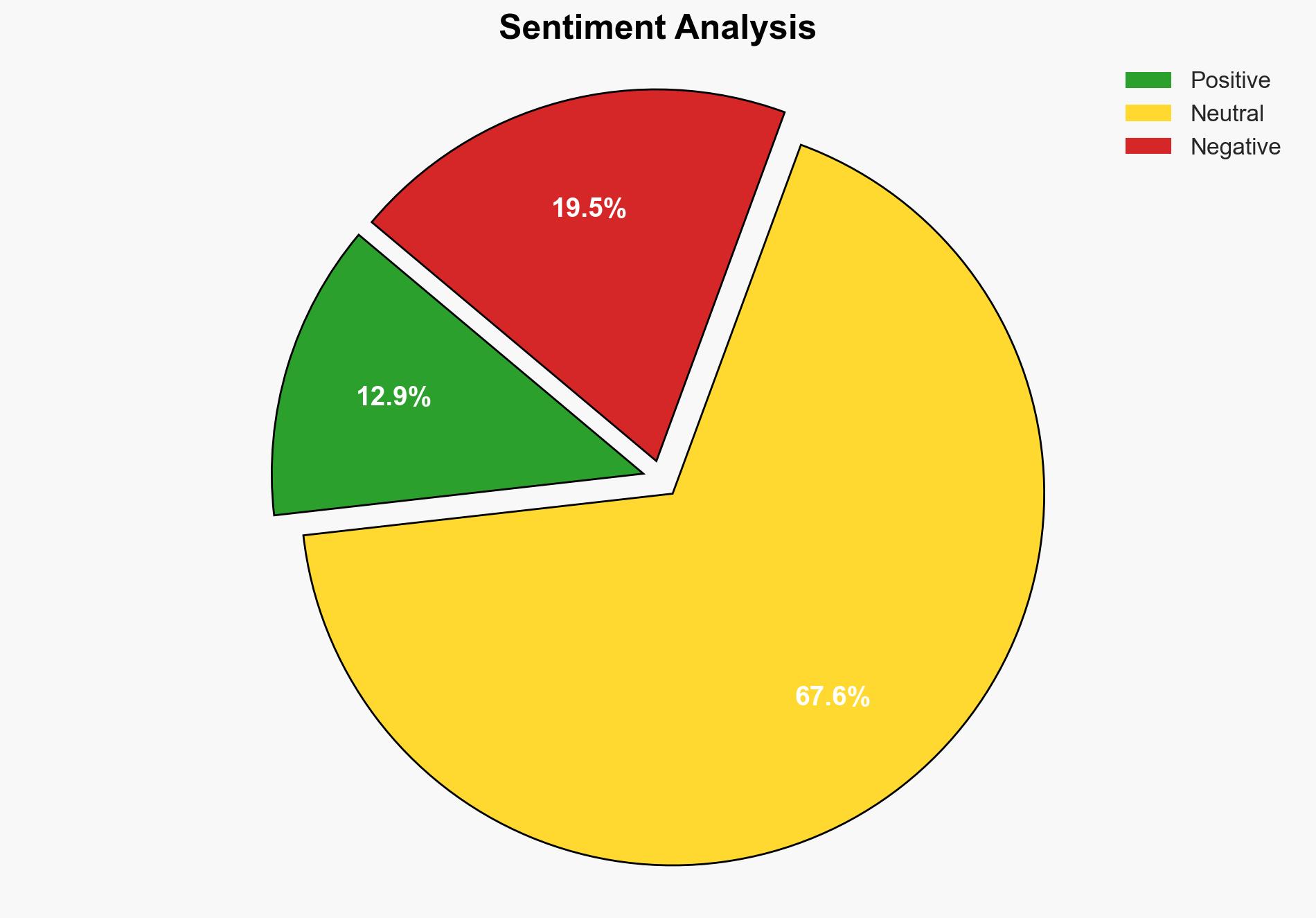Scammers Pose as Cl0p Ransomware to Send Fake Extortion Letters – HackRead
Published on: 2025-03-17
Intelligence Report: Scammers Pose as Cl0p Ransomware to Send Fake Extortion Letters – HackRead
1. BLUF (Bottom Line Up Front)
Recent investigations have uncovered a new trend in cybercriminal activity where scammers impersonate the Cl0p ransomware group to send fake extortion letters. These scammers exploit the notorious reputation of the Cl0p group to defraud businesses by claiming successful network infiltration and data exfiltration. The primary objective is to extort payments from unsuspecting companies by capitalizing on the fear associated with known cybercriminal organizations. Immediate measures are recommended to enhance awareness and strengthen cybersecurity defenses to mitigate this threat.
2. Detailed Analysis
The following structured analytic techniques have been applied for this analysis:
General Analysis
The scammers are leveraging the Cl0p ransomware group’s notoriety to create a facade of authenticity in their extortion attempts. By mimicking the language and tactics of genuine ransomware attacks, they aim to lend credibility to their claims. The use of phishing kits like FishXProxy and Telekopye allows these scammers to create realistic phishing pages, further enhancing their ability to deceive targets. The integration of sophisticated phishing platforms and the exploitation of vulnerabilities, such as those in SVG files, enable these criminals to bypass traditional security defenses.
3. Implications and Strategic Risks
The impersonation of the Cl0p ransomware group poses significant risks to businesses, particularly in the United States. The potential for financial loss and reputational damage is considerable, as companies may feel pressured to comply with extortion demands. This trend highlights the evolving nature of cyber threats and the need for continuous adaptation of security measures. The broader implications include risks to national security, regional stability, and economic interests, as cybercriminals continue to exploit vulnerabilities in digital infrastructures.
4. Recommendations and Outlook
Recommendations:
- Enhance employee training programs to improve awareness of phishing and ransomware tactics.
- Implement advanced security solutions that can detect and mitigate sophisticated phishing and ransomware attacks.
- Encourage regulatory bodies to establish stricter guidelines for cybersecurity practices across industries.
Outlook:
In the best-case scenario, increased awareness and improved cybersecurity measures will significantly reduce the success rate of such scams. In the worst-case scenario, a lack of action could lead to widespread financial losses and damage to business reputations. The most likely outcome is a continued evolution of cyber threats, necessitating ongoing vigilance and adaptation of security strategies.
5. Key Individuals and Entities
The report mentions significant individuals and organizations involved in the investigation and reporting of these scams. Notable entities include Barracuda Network and HackRead, which have provided critical insights into the tactics and methodologies employed by the scammers.




